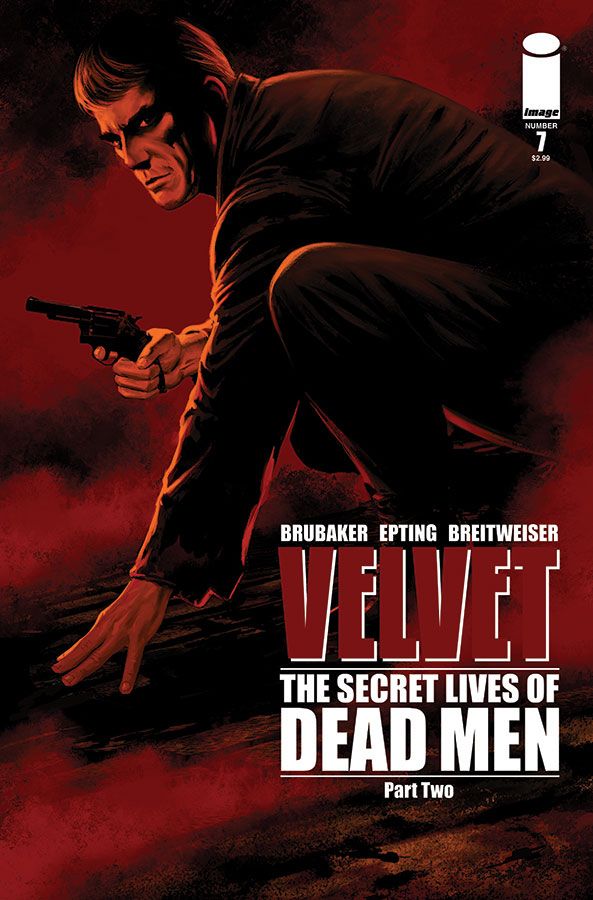As its title suggests, "Velvet" has largely been about -- well -- just that: Velvet Templeton, spy-turned-secretary, and her hunt for the truth. Now in their seventh issue, Ed Brubaker and Steve Epting take a step back from their titular character and their timeline to give readers a behind-the-scenes peek at the investigation that MI6 has been conducting in her absence. Told from the perspective of both Colt and Roberts, "Velvet" #7 slows the pace down a little to accommodate other points of view but is no less action-packed or profound than the other installments in this thrilling series.
Surprising no one, Brubaker and Epting continue to be power team who have chosen their medium well: this issue reads like love letter to its genre, a noir film-meets-spy novel in the way it pairs its cool, even-keeled narration with fluid action. As much as it borrows from convention, however, it still manages to feel truly unique, from its condensed travel sequence to revolving perspective to weaving timeline. Although Colt and Roberts take center stage in this issue, the way that Velvet's personality shines through is a testament to both Brubaker and Epting's strength as creators. She appears only in a couple flashbacks, but her character manages to infiltrate both Colt and Roberts' minds; she may not be with them physically, but she's there in spirit, directing their movements the way she sees fit, all while the reader can vividly picture that signature sly smile on her face.
As fascinating as it is to see Velvet's plight from a different point of view, the issue can't help but read like twenty pages of subplot. Where the ability to switch back and forth is certainly a strength of the medium, the device feels abrupt here, dialing back the pace of the arc to build the suspense it had already achieved in the last few issues. What's more, the information revealed by this extended flashback -- the consternation, confusion and doubt caused by Velvet's flight -- seems as though it could have been left assumed or implied just as easily while powering Velvet's plot forward. As my score indicates, this isn't a deal breaker for the series in any way, shape, or form; this issue is beautifully and masterfully executed. However, until its place in the grander scheme of the plot comes to light, the sidestep feels more frustrating than useful.
Where the story is riveting all on its own, the artwork is on another level, thanks in huge part to colorist Elizabeth Breitweiser. Under her hand, the characters take on a flat, almost painted look, making every panel look for all the world like its own pulp novel cover. Her apt palette skews dark, befitting the world of espionage that the characters inhabit. Her night scenes are clearly defined, easy on the eye, and gorgeous for its pinpricks of light. Though Breitweiser ingeniously sets the mood, Epting's pencils give the world its personality, absolutely nailing his character's facial expressions and body language; his flashback to Velvet is a pleasure to watch as she disdainfully dismisses the flirty Colt. He covers a lot of different European cities in the span of a few pages with an authentic, distinct look for each one. Under the two of them, "Velvet" is a vision to behold.
Brubaker and Epting push "Velvet" forward with another solid installment, giving voice to some of the book's secondary characters. By the issue's breathtaking end, readers will be begging to see more of Ms. Templeton as her plan comes together.

